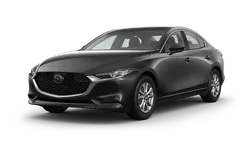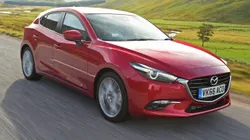

Mazda 3 Generation - Mazda 3 Facelift 2016 Overview
Explore the Mazda 3 generation and its 2016 facelift features. This comprehensive guide highlights key improvements and specifications of the Mazda 3 in Portugal.
The Mazda 3 is a compact car that has long been synonymous with sporty driving dynamics, elegant design, and innovative technology. The third generation, known as the BM series, made its debut in 2013, ...
Technical Specifications
Select Version
Dimensions
Engine
Driving
Others
History and Features
Mycarro AI
Apr 26, 2025
The Mazda 3 is a compact car that has long been synonymous with sporty driving dynamics, elegant design, and innovative technology. The third generation, known as the BM series, made its debut in 2013, but it was the 2016 facelift that revitalized its presence in the highly competitive compact car market. This article will delve into the elements that define the 2016 facelift of the Mazda 3, covering its design enhancements, technological advancements, performance improvements, and overall impact in the automotive world.
Design Enhancements
The facelift introduced for the 2016 model year mainly focused on refining rather than overhauling the aesthetic appeal of the Mazda 3. The striking KODO design language, which emphasizes graceful lines and an athletic stance, was enhanced with subtle changes. The front fascia featured a more prominent grille and new LED headlights that contributed to a modern and aggressive front-end look. The rear of the vehicle was also updated with redesigned taillights and a sportier rear bumper, adding to the overall sleekness of the compact sedan and hatchback.
The color palette was refreshed, introducing new exterior options that allowed buyers to customize their cars even further. The slightly revised proportions and carefully sculpted bodywork not only enhanced the visual appeal but also contributed to the vehicle’s aerodynamics, improving fuel efficiency and reducing wind noise during drives.
Interior and Comfort
Inside the Mazda 3, the facelift brought with it an array of improvements in materials and technology aimed at enhancing driver comfort and convenience. The cabin continued to embrace the driver-centric layout, with controls intuitively positioned for accessibility. The introduction of higher-quality materials lent a more premium feel, with soft-touch surfaces replacing some of the previously employed harder plastics.
In addition to improved aesthetics, the facelift also integrated new technology into the Mazda 3's interior. A revised infotainment system now featured a larger touchscreen display and improved graphics, alongside the introduction of smartphone integration through Apple CarPlay and Android Auto. These features allowed for enhanced connectivity, enabling access to navigation, music, and messaging applications through voice commands or the car's interface.
Performance Improvements
Under the hood, the Mazda 3 maintained its reputation for delivering exhilarating driving experiences. The facelifted 2016 model offered a selection of engines that catered to various performance preferences. The standard model was equipped with a naturally aspirated 2.0-liter four-cylinder engine that balanced power and fuel efficiency, delivering an engaging driving experience with nimble acceleration.
For those seeking even more performance, an upgraded 2.5-liter engine option was available that provided a significant boost in horsepower. Both engines were mated to either a six-speed manual or an automatic transmission, ensuring responsive gear changes and an engaging driving experience, whether on urban streets or winding country roads. The introduction of the G-Vectoring Control system further enhanced handling by adjusting engine torque during cornering, adding to the car's already agile dynamics.
Safety Features
Safety has always been a priority for Mazda, and the 2016 facelift of the Mazda 3 introduced a suite of advanced safety features designed to protect both drivers and occupants. The vehicle was equipped with an array of safety technologies, including adaptive cruise control, lane departure warning, and blind-spot monitoring. These additional systems not only improved the overall safety of the car but also the driver’s confidence when navigating through various driving conditions.
The Mazda 3 also performed well in safety tests, earning high ratings from organizations like the National Highway Traffic Safety Administration (NHTSA) and the Insurance Institute for Highway Safety (IIHS). This emphasis on safety underscored Mazda’s commitment to providing a well-rounded vehicle that excels in performance and occupant protection.
Market Impact
Upon its release, the Mazda 3 Generation 3 (BM) facelift garnered attention from automotive enthusiasts and consumers alike. Its combination of stylish design, cutting-edge technology, engaging performance, and robust safety features positioned it as a strong competitor in the compact car segment. The facelift played an essential role in maintaining the model's relevance in a market crowded with options, reaffirming Mazda's commitment to innovation and excellence in automotive design.
The Mazda 3 remains one of the brand's flagship models, representing the perfect blend of sportiness, efficiency, and practicality. As the automotive landscape continues to evolve, the legacy of the Mazda 3, particularly in its 2016 facelift form, will continue to influence future generations of compact vehicles.
